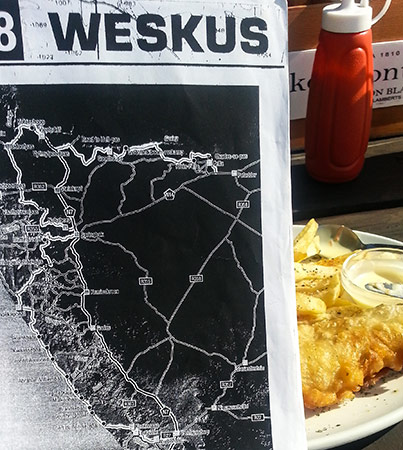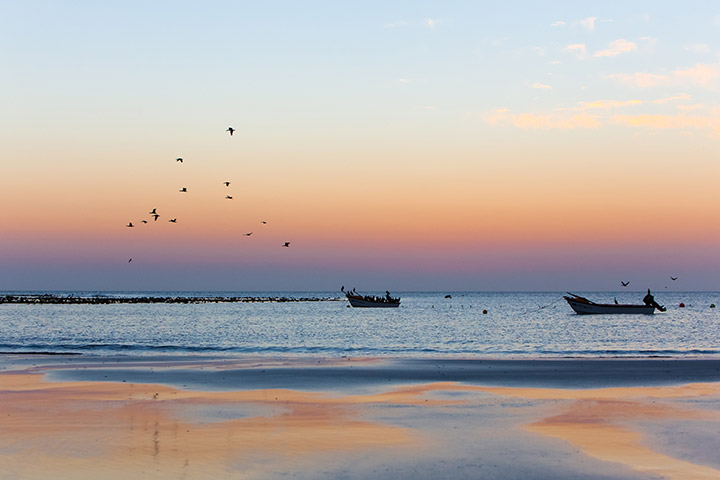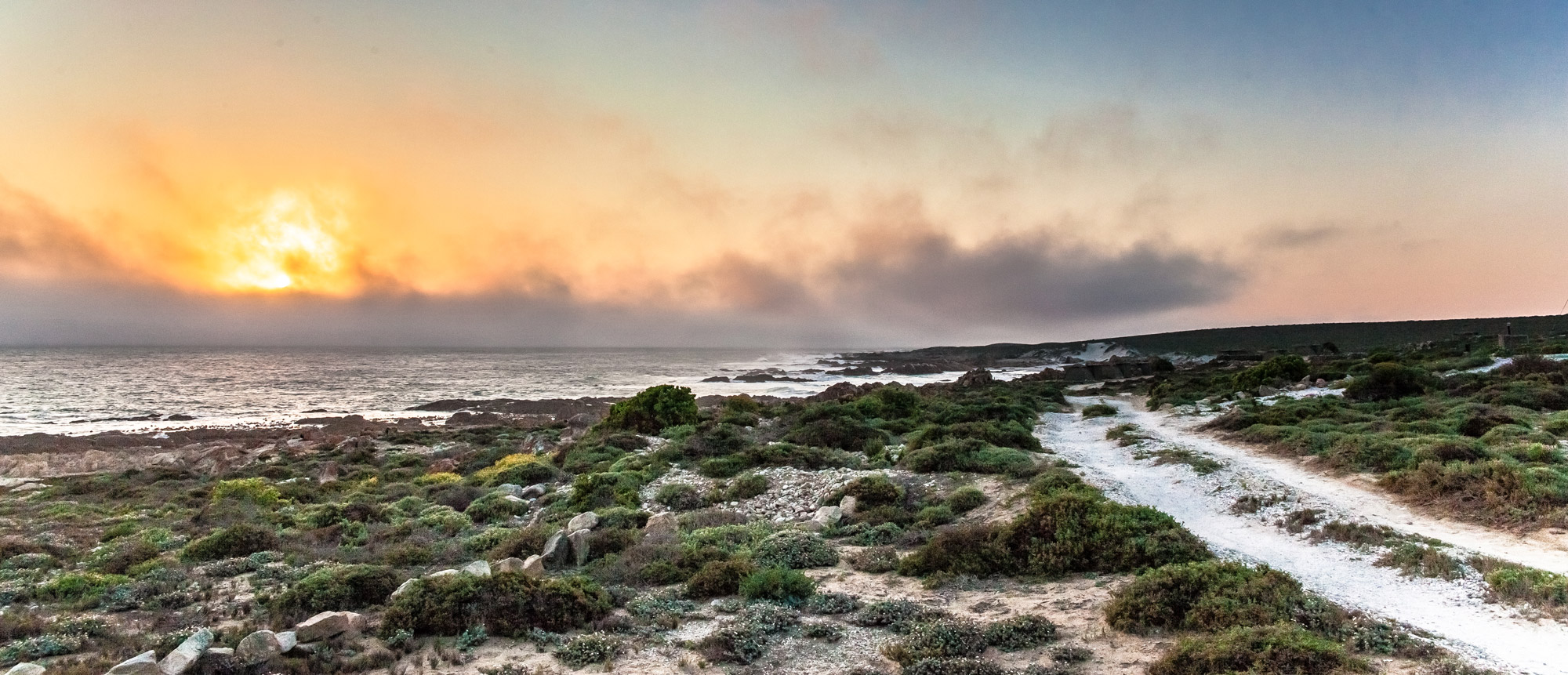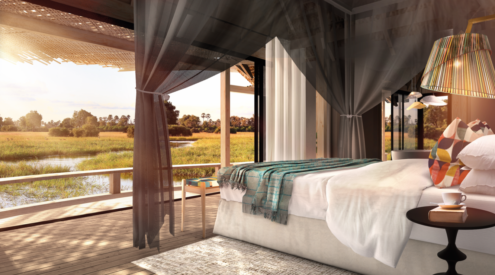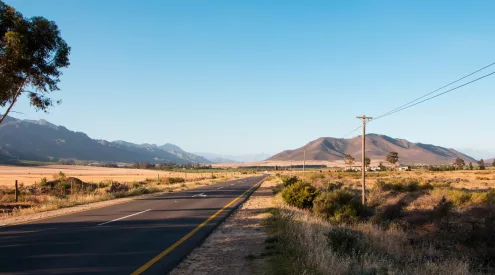Since I was 16 years old, camping trips have been held up by the nightmarish N7 roadworks. This time I set out for Hondeklipbaai, determined to avoid the stop-gos. The result? A whole new world of pristine beach camping and fantastic West Coast hospitality.
Also read: A West Coast roadtrip, in photos
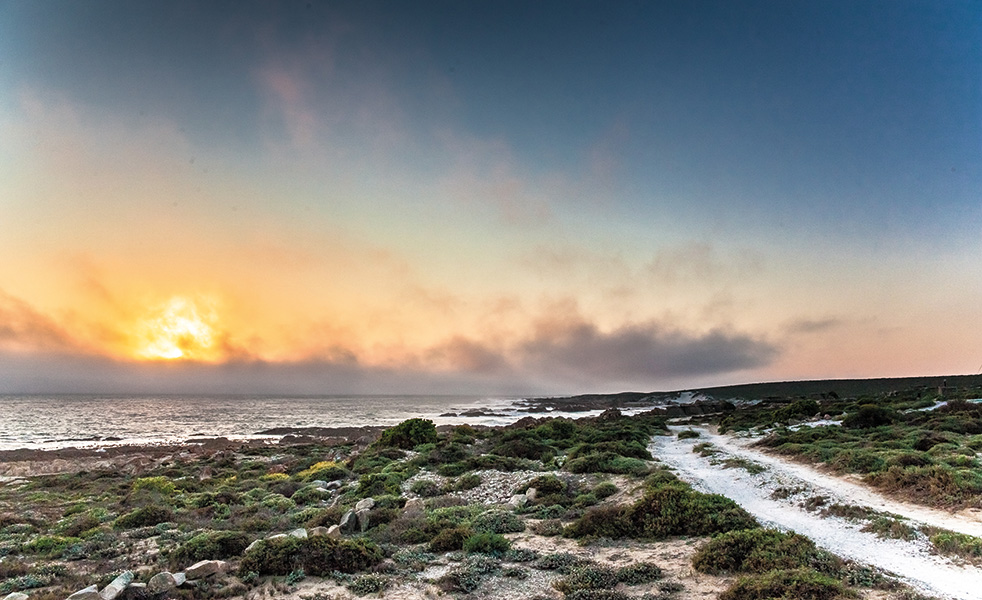
Twice a year, Chiefs Tented Camps pitch their luxury domes on this stretch of the wild Namaqua National Park coastline.
I’ve been wasting time on the N7 as far back as I can remember. In the early 1990s, arbitrary stop-go’s delayed my school camping trips to the Cederberg. Years later, blasting on Piekeniers Pass had me sitting in traffic for hours. Then the diggers turned back to pulverise Malmesbury. Even now, frustrated motorists are probably backed up around Klawer. Twenty years of roadworks. Is there an end in sight?
Perhaps this is some ingenious Sisyphean task devised by the national roads agency: by the time work stops at Clanwilliam there’ll be just enough potholes in Springbok to start all over again. At this rate they’ll keep the Cape’s public works programme open indefinitely. These were my thoughts as I sat stationary at my seventh stop-go outside Vanrhynsdorp a few months ago, trying not to feel like a fool.
I knew the N7 was bad. I knew there would be delays. Why on earth was I back on this nightmare of a road? I vowed that next time would be different. There must be alternative routes along the West Coast, even if they took a little more. And time spent exploring was bound to be better than wasting it in queues.
Some weeks later, my colleague and I had a sunny long-weekend to spare. A drive from Cape Town to Hondeklipbaai avoiding the N7 seemed the perfect road trip. Our plan was to go straight to Langebaan and then continue north, keeping as close to the coast as possible. If there was a road heading west, we’d take it. Only whales and lobster would be further from the roadworks than us.
A lot’s changed in Langebaan
Langebaan was my favourite family holiday spot when I was a kid. I remember a sprawling, electricity-less house and a single general store selling lucky packets and MAD magazines. I hadn’t been back for years and things have really changed. Large holiday homes now dominate the hills above the lagoon – not tasteless, just far more than I remember. The high street is full of restaurants and chain stores. Kitesurfing has taken over and the owner of WindChasers Guest House described an ebbing-flowing clientele gusting in on the breeze and vanishing again at the slightest lull.
There must be plenty of them to justify Windtown, the kitesurfer resort that’s sprung up near the beach. Looking around for something I could remember, we found the four-star The Farmhouse Hotel on the bluff overlooking the yacht club. The old guest house has changed a lot since the early 1990s. Wood panels, high ceilings and the scent of wood smoke took me back, but with decor more luxurious than I remember. Room 9, in particular, stood out. With its beautiful view across the lagoon, it’s perfect for a romantic getaway; its kingsize bed beckoned me in. Pity Tyson and I aren’t quite that close. We moved along to find a campsite only to discover that Langebaan’s campsites leave a lot to be desired. We eventually settled on Oostewal Caravan Park (R119 for the stand), which was clean and only marginally run-down.
In retrospect, a few more rands spent in the West Coast National Park would have been better value for money; the park very is different from the gravel road and fenceless tract I remember. We received a map at the gate that was covered in hiking and mountain-bike trails, bird hides and braai spots. Scattered between were the Duinepos Chalets, SANParks cottages and a couple of houseboats to stay in.
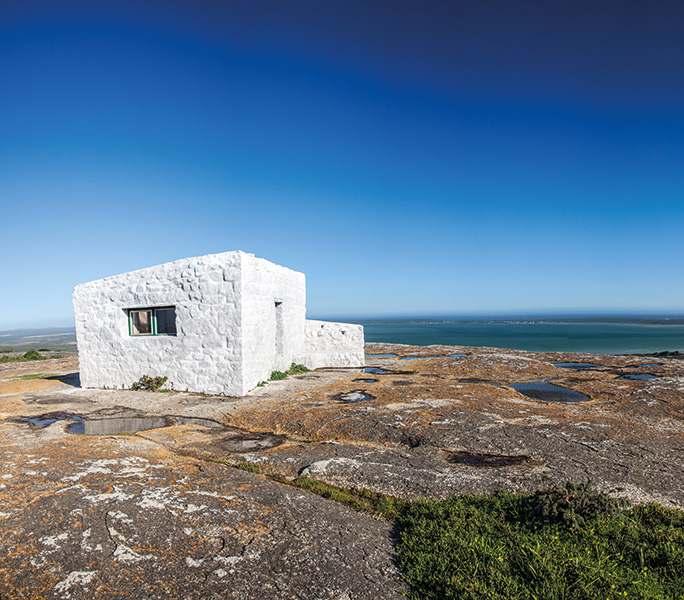
Don’t miss this beautiful park with its cottages, walking trails, mountain biking, beaches and braai spots.
Where to stay in Langebaan
Oostewal Caravan Park
Rates: Stands are R119 per night (four per stand)
Contact: 022 772 2442
WindChasers Guest House
Rates: Dorm B&B and self-catering rooms from R250/R325 per person
Contact: Tel 082 079 0500, windchaserssa.com
Windtown
Rates: Single, double and triple B&B rooms from R850/R1 000/R1 250 per room
Contact: Tel 022 772 1064, windtown-sa.com
The Farmhouse Hotel
Rates: Double B&B rooms from R725 per person
Contact: Tel 022 772 2062, thefarmhousehotel.com
Where to stay in the West Coast National Park
Duinepos Chalets
Rates: Four- to six-sleeper self-catering chalets from R1 065 for four people
Contact: Tel 022 707 9900, duinepos.co.za
SAN Parks cottages and houseboats
Rates: Four- to eight-sleeper self-catering cottages from R1 105 per person Park fees R40 per person, up to R56 per person in flower season. Wild Card holders free.
Contact: Tel 022 772 2144, sanparks.co.za
Following the loops to Lambert’s Bay
From Langebaan we drove north to Velddrif and Dwarskersbos, hunting for a route along the coast. To the east, wide, treeless fields vanished towards the Piketberg Mountains and the coastline stretched flat and featureless; low dunes hid the sea from the road. It’s here that the old Spoornet service road crosses the tar for the first time. In staggered ‘loops’ (loop one runs from Velddrif to Elands Bay and loop two from Elands to Lambert’s Bay), these well-graded dirt tracks follow the railway line.
(Ed’s note: These loops are subject to closure at the authorities’ discretion. While they were open to the public when the author visited the area, they may since have been shut to the public. If so, you can still drive to Lambert’s Bay and Lutzville via the main tarred road.)
When the loops are open you’ll need to complete a register at periodic checkpoints, but it’s free and the delay is minimal. For 100 kilometres, they run more or less parallel with the main tar road and we hopped on and off, taking whichever was closer to the sea. Loop two, from the outskirts of Elands Bay, saved a long detour to Leipoldtville (don’t miss the boom control as you drive east out of town), but the accommodation options were all on the main coast roads: the four-star Draaihoek Lodge halfway between Dwarskersbos and Elands and some self-catering and camping options on the R365 south of Lambert’s Bay.
If you’re passing through on the weekend, make Muisbosskerm your overnight stop. This beachside restaurant opens whenever there are enough bookings and R210 gets you more braaied seafood and weskus trimmings than you can manage (crayfish halves are an extra R45 each). They also run a handy campsite and cottage just across the road.
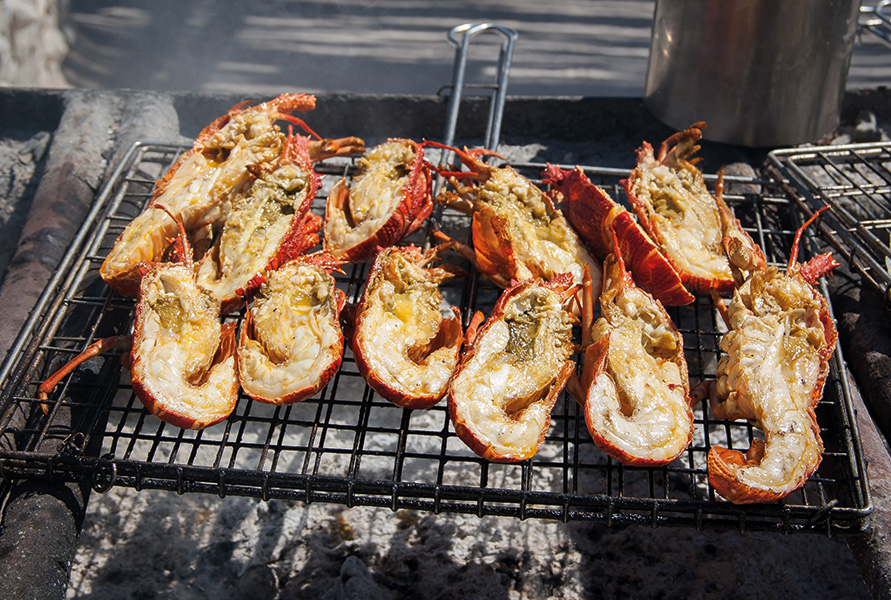
Great seafood is one of the West Coast’s major attractions. Visit Muisboksskerm, south of Lambert’s Bay, for a feast.
Where to stay south of Lambert’s Bay
Draaihoek Lodge
Rates: B&B rooms from R750 per person per night sharing
Contact: Tel 022 952 1170, draaihoek.com
Muisbosskerm
Rates: Camping stands are R225 (five per stand) and the two-sleeper cottage is R650 per night
Contact: Tel 083 370 0400, muisbosskerm.co.za
The wonderful coast to Groenrivier
We arrived in Lambert’s Bay wondering where to go next. The Spoornet loop continued north towards Doringbaai, but from there our coast-hugging quest was under threat. At Doringbaai, the tarred R362 turns east towards Lutzville and there were no clear alternatives back to the coast. We stopped at the harbour-side Weskus Kombuis to ponder our fate. Then, over a whale-sized portion of fish and chips, I asked the proprietor whether he had any tips and hit the jackpot. From an old pile of papers on the corner of his desk he produced a near-illegible photocopy a dog-eared 4×4 trail map. It was his only copy. He passed it to us with a smile.
‘Look out for a left turn to Platskraal off the R363,’ he said. ‘You’ll have to open a few gates, but you’ll find your way through. Just follow the signs to the Tormin mineral mine and you’ll be back on the coast in a few hours.’ Not trusting our memories, we snapped a quick photo of the map and gathered our things. Full of fish, and with a renewed sense of purpose, we drove on to Lutzville and north on to the R363.
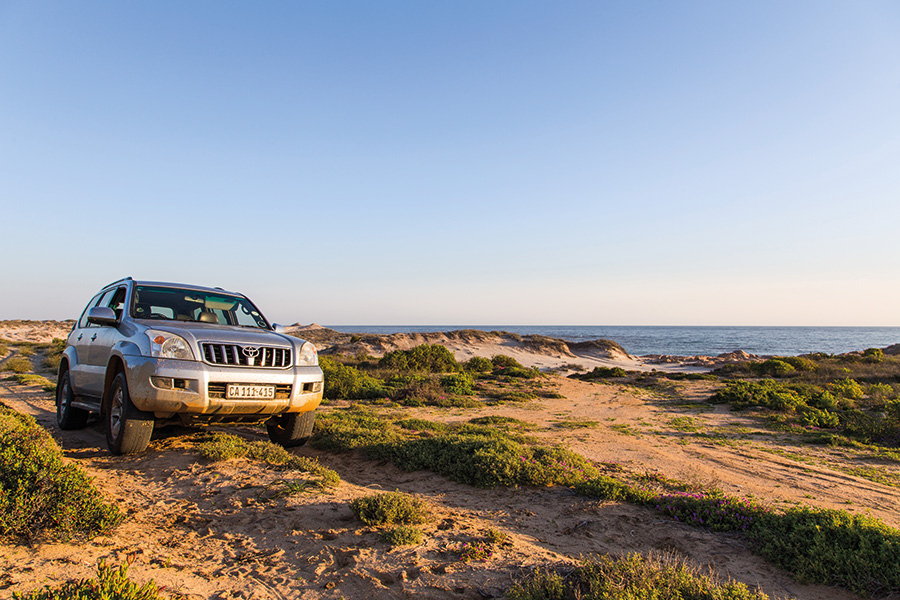
4×4 is not strictly necessary south of the Groenrivier, but high clearance is, especially after rain. Inside the park, a 4×4 is essential.
There is no better route along the west coast than this. For 90 kilometres, cove after sandy cove unfolded before us, and we cruised unhurried down the jeep track as it wound in and out along the shore. Hectares of farmland spread inland, but this narrow strip of pristine coastline must be one of the few places left in South Africa where you can wildcamp on your own piece of beach. Rough tracks lead to all the little beaches so there’s no need to drive along the shore and endanger the ecosystem.
Gert du Toit-se-baai, Geustyns Se Gat and Brand Se Baai were all marked out on our photographed map, but we picked a spot just past Malkopbaai, cracked open a few beers and set up camp. Not a single car passed. We’d found a piece of paradise.
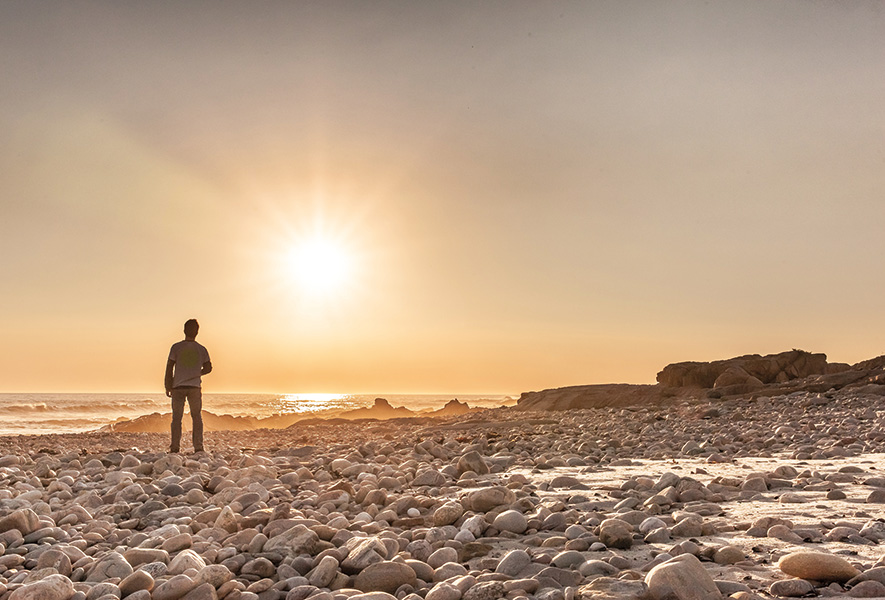
The beaches around Malkopbaai are pure white sand, with a few rocky slivers in between. Large chunks of quartz poke out between mussel shells and kelp tubes.
West Coast hospitality at the Namaqua National Park
At noon the next day we crossed the Groenrivier and pulled into the car park at the Namaqua National Park gate. It didn’t take long to realise we’d come woefully under-equipped. The friendly staff took our R30 (per person) entry fee and politely asked whether we had a compressor.
We did not. The park official looked at us, bemused. More bemused was the look on Wickus Louw’s face when he pulled into the car park five minutes later and found me letting air out of our tyres with a handy piece of mussel shell. Wickus works for Chiefs Tented Camp and was there busy setting up luxury, tented camps for the August/September flower season (there’s another for a crayfish feast in December/January each year).
He took one look at my pathetic attempts and, with a warm handshake and absolute assurance, insisted that we follow him back to his camp for some much-needed gear. He had everything: a compressor, a tyre gauge, multi-tools, hitches, a tow rope, even a reflective vest. Soon a whole box of his essential 4×4 kit was sitting in the back of our car beside our ragged festival tent and camping chairs.
‘You’re coming back this way right?’ said Wickus as we jumped back into our car. ‘If not, don’t worry, here’s my number. Just drop this back in Cape Town when you’re done.’ We had no idea where in Cape Town he lived. Namaqua National Park is the last stretch of wild coastline before the mine-ravaged desolation further north. There are fewer bays and flatter hills here than to the south, with steenbok replacing the sheep between the bushes. The park’s simple ablutions, small clutches of stands and untouched beaches are accessible only by a single, very sandy 4×4 track, making it hard to get to but worth every effort. It led us through a sea of flowers, past tortoises and behind road-hogging ostriches and their skittish, twittering chicks.
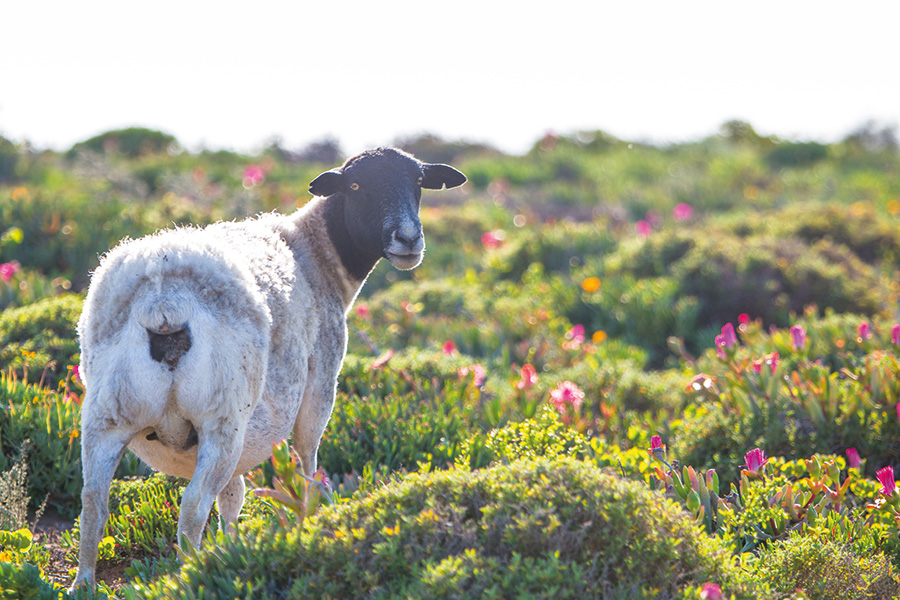
South of the Groenrivier, sheep graze along the coastline, replaced by steenbok as you enter the Namaqua National Park. Photo by Tyson Jopson.
As far as biodiversity goes, Namaqualand is unsurpassed by any similarly arid region in the world. More than 1 000 of its roughly 3500 plant species occur here and nowhere else. The land is flat, but not lifeless. There are things scurrying and hurrying wherever you look.
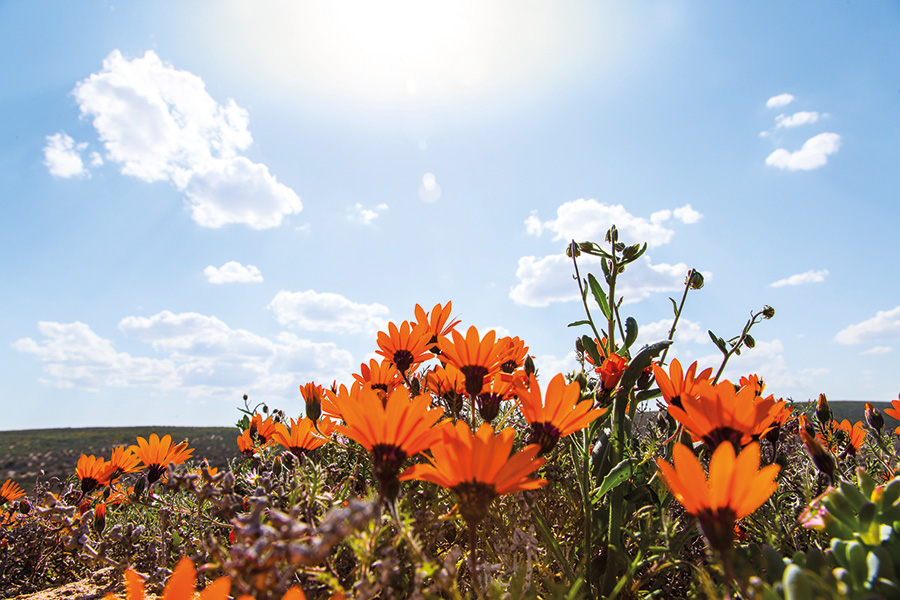
During August and September, the otherwise monochrome meadows are covered in sun-loving daisies. Photo by Tyson Jopson.
Where to stay in Namaqua National Park
SAN Parks Groenrivier
Rates: Stands are R116.15 per night (six per stand) Park fees R30 per person. Wild Card holders free
Contact: 027 531 1015, sanparks.co.za
Chiefs Tented Camps
Rates: DB&B from R1 850 per person per night sharing
Contact: 0861 010 200, namaquacamps.co.za
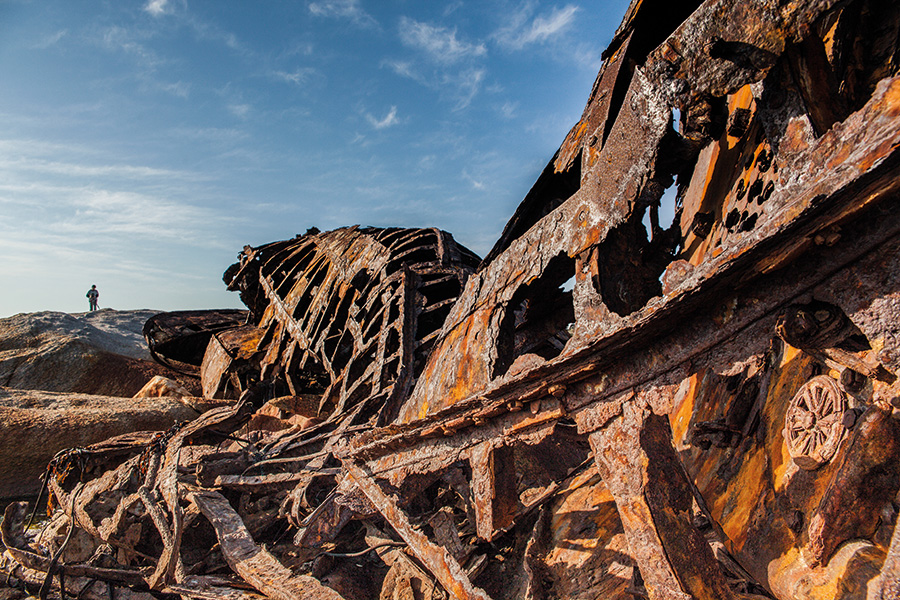
The wreck of the HMSAS Aristea, just south of Hondeklipbaai, is a desolate and beautiful spot for a sundowner.
The road to Hondeklipbaai
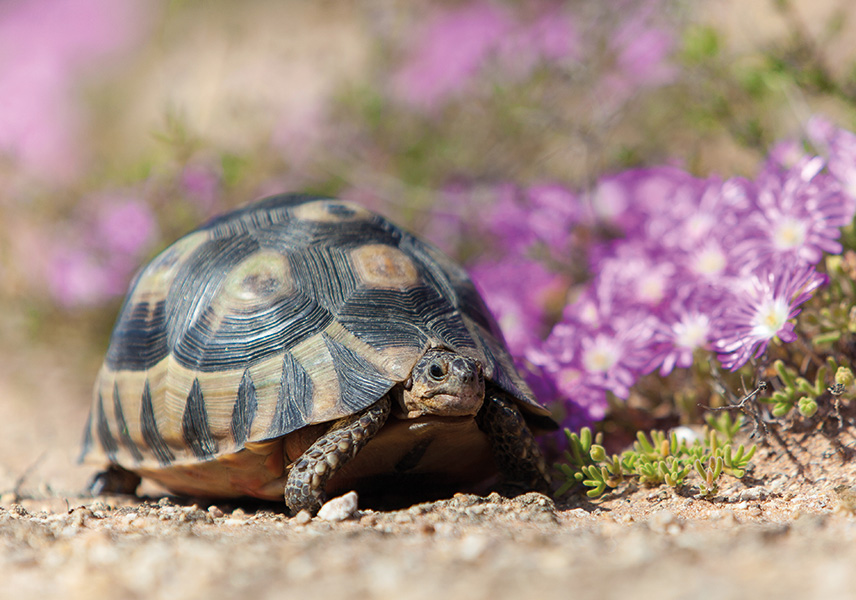
Namaqualand Tent Tortoises are everywhere along this stretch of coastline. Look out for them on the roads.
We exited the park on the road to Hondeklipbaai and stopped to pump up the tyres. To the west, one last 15-kilometre stretch ran arrow-straight to the coast, the promise of seafood, and an ice cold drink. When we parked on the beachfront 20 minutes later, I knew the Dop & Kreef restaurant would tick all the right boxes. Hondeklipbaai has a small general store, a couple of eateries and a few guesthouses. The Honnehokke is well known and comfortable, but our hostess for the night was Dop & Kreef owner Lohana Viviers, who insisted on free shooters and a whole bowl of extra crayfish tails, which we barely managed to dent.
When she escorted us back to her self-catering cottages (R450 for the twin room), it was a good thing we didn’t have far to go. We’d finally reached our objective, but the town had stopped being our goal days ago. What I’d come to realise was that the entire West Coast had become our destination.
It didn’t matter which harbour-side fish ’n chip shop we found for lunch or which deserted beach we’d picked for a stroll, our five-day trip had become less about reaching Hondeklipbaai and far more about the endless little coves, campsites and characters we’d discovered along the way.
The only thing I have against West Coast hospitality is how hard it is to say no, and we groggily started our journey home the next morning. We had a stop to make en route though all that gear to drop back with Wickus.
Where to stay in Hondeklipbaai
The Honnehokke
Rates: Three to six-sleeper cottages from R550 per night
Contact: 082 564 5471, honnehokke.co.za
Dop & Kreef selfcatering cottages
Rates: Twin-sleeper cottages from R450 per night
Contact: 083 281 8327
West Coast emergency numbers
SAN Parks Groenrivier Office: 027 531 1015
Police Hondeklipbaai: 027 692 3008
Police Garies: 027 652 1010
Hospital Garies: 027 652 8100
Local ambulance: 10177
Netcare ambulance: 082911
ER 24: 084124









